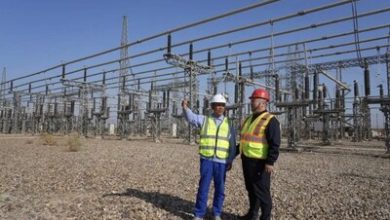Today’s fast-evolving automation and sustainability trends require careful planning and an emphasis on adaptability, advises HFA Architecture + Engineering.
BENTONVILLE, Ark., Sept. 16, 2025 /PRNewswire/ — The U.S. cold storage sector can better adapt to its present and future needs by embracing smarter, cleaner and more flexible approaches to industrial design, advised HFA Architecture + Engineering.
Most of today’s aging U.S. cold-storage infrastructure is inadequate to the need for modern industrial buildings to be more sustainable and automated, notes a 1,600-word HFA advisory column on the industrial subsector. “Developers and A+E firms must work together to create spaces that not only serve their current purpose but can also transform in years to come as technology and needs shift.”
In the piece, HFA provides tips for moving toward this more flexible approach.
‘Upcycling’ older industrial buildings
The piece cites the benefits of repurposing shallow-bay warehouses in urban areas—a form of upcycling that is well-suited to last-mile delivery. As a bonus, a well-designed retrofit can significantly reduce long-term operating expenses.
In the piece, HFA recommends using reality-capture scanning technologies to set the stage for an automation-ready retrofit. Additional advanced systems can bolster performance in other ways as well. “For example, using a centralized Building Management System (BMS) enables precise monitoring and control over HVAC, refrigeration, lighting, and humidity. These systems also provide real-time alerts for temperature deviations, equipment malfunctions, or open dock doors—allowing operators to respond quickly and protect inventory.”
Meanwhile, sensor data-driven predictive maintenance can reduce downtime, extend equipment life and optimize energy use.
Updating older systems in phases
Given the push for more sustainable cold chains, it is important for A+E firms and their clients to find the right balance between meeting consumer expectations, reducing environmental impact, and staying attractive to investors and city planners. Updating older systems in phases is one approach that has become popular among brands that are pushing to achieve net zero.
“A big step is moving away from traditional refrigerants—many of which have extremely high global warming potential (GWP)—and toward HFC-free (hydrofluorocarbon-free) alternatives,” HFA advises. “For example, propane has a GWP of just 3, compared to older refrigerants with GWPs over 1,400. These greener options are not only better for the environment but often improve energy efficiency as well.”
Developing flex warehouses on spec
Industrial developers can meet skyrocketing demand by stepping up their efforts to build flexible cold-storage spaces (typically a partially finished shell later filled out by the eventual client) on spec, HFA notes. The design must be pliable enough to meet users’ variable needs while also incorporating “nonnegotiable” elements such as the 50-foot-plus ceiling heights required for Automated Storage and Retrieval Systems (ASRS). “Not all systems are rated for extreme cold temperatures,” HFA adds, “so making sure to choose the right solutions for your temperatures is crucial to maintaining the integrity of these systems.”
Likewise, the concrete pad must be exceptionally level and incorporate heating—for example, an electric or glycol-based underfloor system—that will prevent floor heaving caused by subgrade freezing. “While insulation is important, good moisture management is key to a well-thought-out facility,” HFA observes.
To maintain smooth and efficient operations, most cold storage buildings should range from 200,000 to 300,000 square feet, with additional space allocated for loading docks, trailer storage and efficient truck circulation.
Futureproofing for automation
With labor shortages persisting across logistics and warehousing, the design should anticipate the need for the likes of automated pallet-handling systems or robotic picking. “These flexible systems can be upgraded or reconfigured as technologies advance, enabling operators to respond more efficiently to shifts in product mix, order profiles, or distribution models,” HFA notes.
HFA’s industrial architects and engineers now embed automation-readiness from the ground up on new and retrofit cold-storage projects. “As volumes increase, technologies evolve, sustainability standards tighten, and workforce dynamics shift, facilities must be ready to adapt.”
The conclusion to the piece points to the gap between current capacity and future demand, and an opportunity to reimagine cold storage.
“The decisions made at the design stage will define long-term efficiency, cost-effectiveness, and competitive advantage. The future of cold storage isn’t just about keeping things cool; we must create responsive, resilient facilities that evolve in step with technology, consumer expectations, and global supply chain needs.”
Read the full article at:
http://hfa-ae.com/blog/future-ready-cold-storage
Media Contacts: At Jaffe Communications, Elisa Krantz, (908) 789-0700, [email protected].
View original content to download multimedia:https://www.prnewswire.com/news-releases/flexible-design-can-future-proof-us-cold-storage-real-estate-302557572.html
SOURCE HFA Architecture + Engineering




